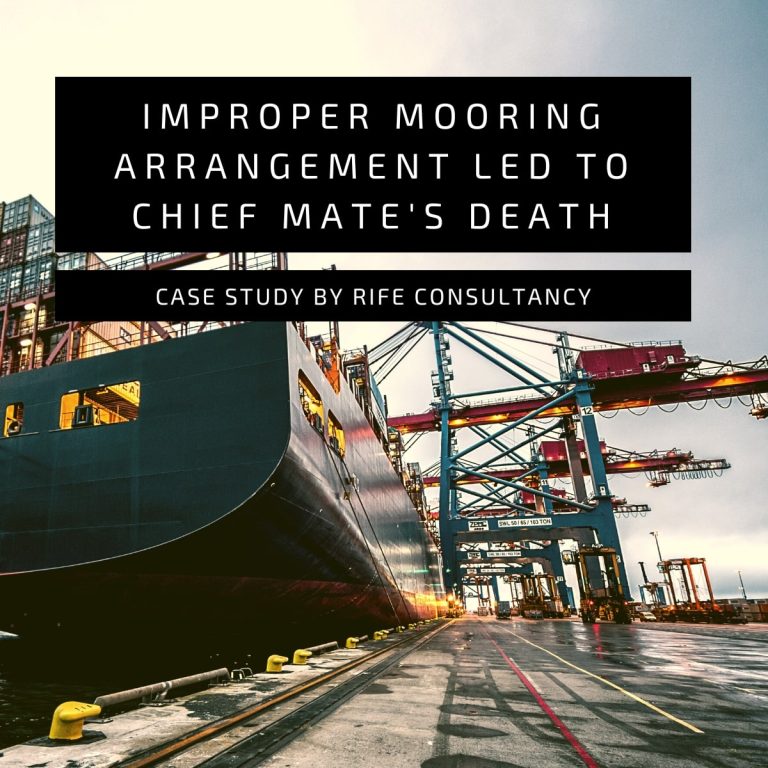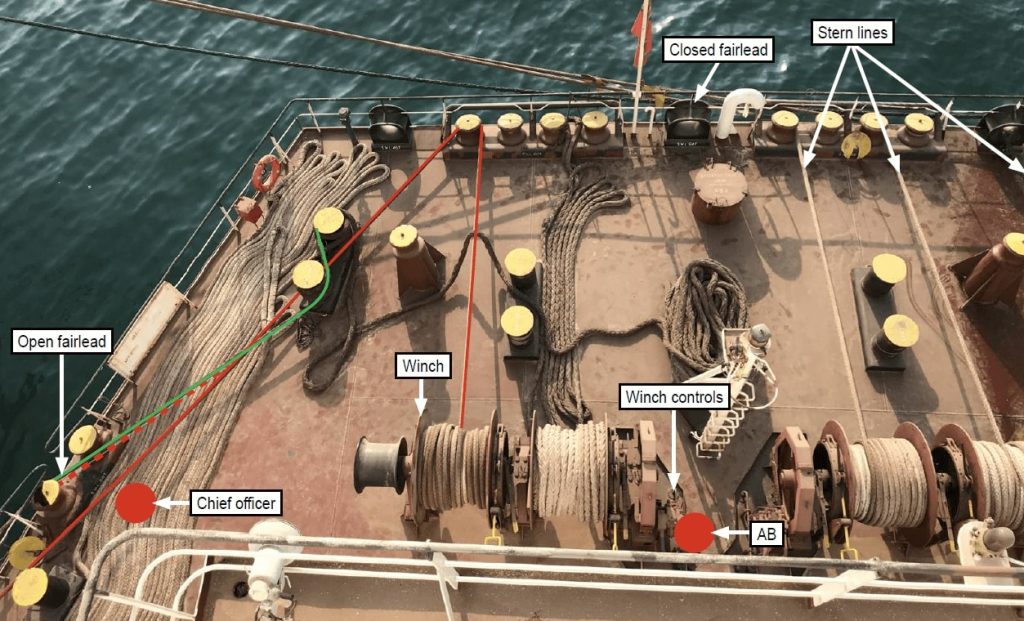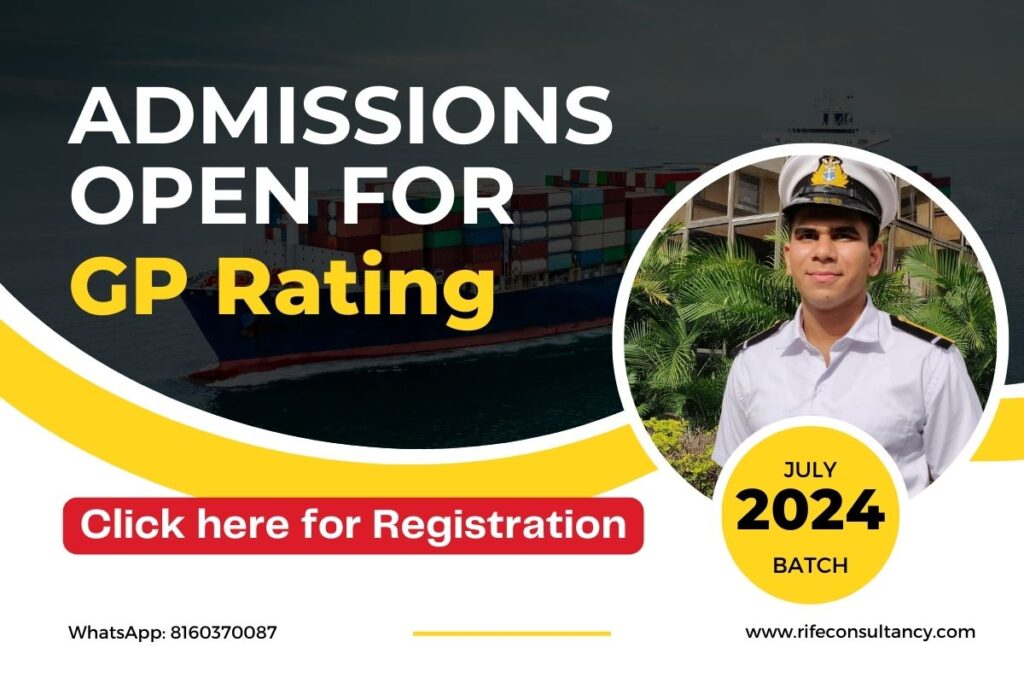
UK MAIB – Improper Mooring Arrangement Led to Chief Mate’s Death
The UK MAIB has released a report on the death of a chief officer who was killed in 2021 after being struck in the head by a tensioned mooring line aboard a bulker. The report concludes that the chief officer’s death was partly caused by a shorthanded operation and a lack of familiarity with the mooring arrangement.
The bulk carrier Teal Bay landed in Kavkaz, Russia, on August 29, 2021, when it met up with a transloading ship and loaded grain from small motorized barges. Teal Bay anchored alongside the geared bulker Kavkaz V on the Kavkaz’s port side under the pilot’s instructions.
The crew had never performed ship-to-ship loading operations in this way before, nor had they ever made fast to another vessel of this size. Three head lines, three stern lines, two bow spring lines, and two stern spring lines were all combined. (Maritime nations have different naming standards for spring lines; in this context, “stern spring line” refers to a forward-leading spring line coming from the stern.)
As soon as the transloading process began, the Kavkaz V’s crane operators began to collect grain from small barges on the ship’s starboard side, swing it over the deck and over to the ship’s port side, and then dump it into Teal Bay’s holds. Teal Bay’s freeboard dropped as the operation went on and her holds filled up.
Her main deck level sank to roughly 25 feet below the Kavkaz’s deck during the course of the following day, and her mooring lines began to point upward. At about 2220 on August 30, loading was nearly complete.

In order for the crane operator to access another area of Teal Bay’s hold, the third officer aboard Kavkaz V asked Teal Bay to advance. Since this was a minor shift, Teal Bay’s master made the decision to warp ahead. He could have handled this as a full mooring operation in accordance with the SMS, but doing so would have required rousing up the crew on off-watch to bring in more staff. He despatched the chief mate to the stern and the third mate to the bow, each with one AB, so as not to wake the crew.
Around 2235, the AB on the stern spring line started the winch to pull in and warp the ship ahead as the team on the bow relaxed their spring line. The chief mate was standing next to the open roller fairlead towards the edge of the deck, where he would have been able to observe and manage the evolution.
The line flew up and out of the roller fairlead and struck the chief mate in the head as soon as it was put under strain with a vertical lead towards the higher main deck level of the Kavkaz. He quickly dropped to the deck unconscious.
The chief mate received first aid, including oxygen, from Teal Bay’s second officer after the local maritime rescue coordination center was notified. The victim showed no obvious symptoms of injuries, but was breathing and had a pulse.
At 23:16, a tug arrived to transport the victim, but the crew refused to board him until they had permission from the port. A helicopter alternative was proposed, but none was available. In the end, the chief mate boarded the tug, which departed for shore at 23:50.

The officer’s pulse had slowed by this time. The chief mate had no vital signs when a paramedic arrived to meet the tugboat at the port at 00:45. He had died from a brain hemorrhage caused by blunt force trauma, according to an autopsy.
The vertical lead from the deck of the Teal Bay to the deck of the Kavkaz, along with the crew’s choice to run the line through an open roller fairlead, allowed the line to pop out of the fairlead when it was put under tension, according to MAIB’s findings. The crew might not have been aware of this because they were unfamiliar with this specific mooring operation; the proper choice would have been to choose a closed roller fairlead.
Before the evolution, no risk assessment was done, hence the chance to find this hazard was lost. The master might have decided to warp ahead without doing a more thorough assessment of the situation due to the short distance of the transfer and the need to finish the loading procedure fast.
The chief mate had fewer people available than normal and was entrusted with overseeing both the aft deck and the evolution as a whole because the captain did not bring out the crew for a full mooring operation. The chief mate wouldn’t have been on the stern if the entire crew had shown up.
Even while it is impossible to say whether the officer would have survived even with rapid care, MAIB decided that the additional time required to make medevac preparations decreased the officer’s chances of life. The ship manager has been instructed, among other post-casualty recommendations, to replace all open fairleads in its fleet with closed or universal type fairleads that won’t release a line with an upward lead.
Click here to join our Telegram chanel
You will get information, news, and support related to Merchant Navy.


